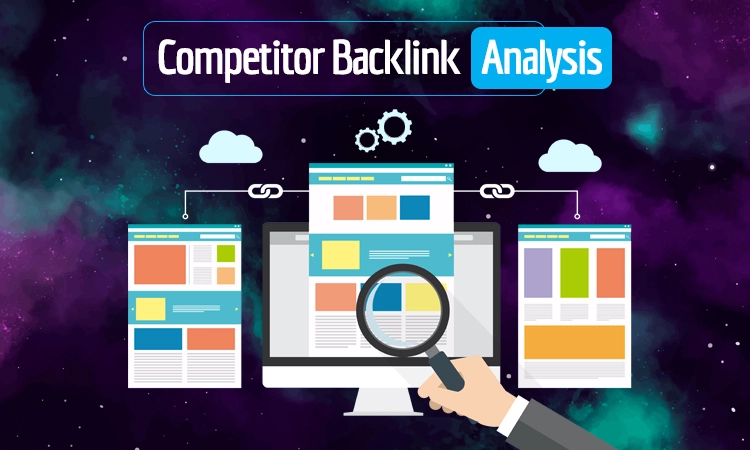Analysing Competitor Backlink Profiles for Opportunities
In search engine optimisation, backlinks remain one of the strongest ranking factors. High-quality inbound links signal authority and relevance, helping your website earn higher visibility in search results. But finding valuable link opportunities can be challenging, especially in competitive industries. One of the most effective methods is analysing the backlink profiles of your competitors. Understanding where your rivals earn their links, and why, helps you identify gaps and new possibilities for your own strategy.
Why competitor backlink analysis matters
Backlinks act as votes of confidence. Each link from a credible domain transfers part of its trust to your site, reinforcing its authority. Analysing competitor backlinks lets you see which domains are already endorsing similar businesses. If a site links to multiple competitors but not to you, it could be a prime opportunity.
A detailed backlink audit also reveals the kind of content that attracts links. Do competitors earn links from data-driven studies, industry guides, or media mentions? Recognising these patterns allows you to focus on similar formats that naturally draw attention and citations.
Google has consistently confirmed that backlinks remain among the top signals used in ranking web pages. According to Google Search Central, quality, relevance, and diversity of referring domains all influence how algorithms evaluate authority.
Collecting backlink data
Several tools can help you gather competitor backlink data, including Ahrefs, SEMrush, and Majestic. For an accurate picture:
- Identify your top competitors by searching for the key terms you want to rank for.
- Export their backlink data using multiple tools to cross-verify.
- Filter out low-authority or spammy domains.
- Categorise links by type: editorial, directory, forum, news, or partnership.
Cross-checking ensures your analysis is not skewed by one dataset. Many tools display metrics such as Domain Authority (DA), Trust Flow, or Spam Score. Use these to rank potential targets, but always review the sites manually.
Evaluating link quality
Not all backlinks are equal. High-authority links from reputable, topic-relevant sources are the most valuable. To assess link quality, consider:
- Relevance: Does the linking page discuss your industry or a related topic?
- Authority: Is the referring domain established and trustworthy?
- Traffic potential: Does the site attract genuine visitors?
- Anchor text: Is the link using natural, descriptive text rather than over-optimised keywords?
- Placement: Links within main content hold more weight than those in footers or sidebars.
Avoid pursuing links from link farms, low-quality directories, or expired domains. These can trigger penalties and damage your reputation.
Spotting gaps and opportunities
Once you have a list of competitor backlinks, compare them against your own. Look for domains linking to multiple competitors but not to you. These “common links” indicate that the site frequently references businesses in your niche.
You can also uncover broken link opportunities. If a competitor’s page that previously attracted backlinks has been removed, reach out to those linking domains and suggest your equivalent content. This technique, often called broken link building, adds immediate value for the publisher.
Guest posting remains another legitimate strategy when done properly. Many websites that link to competitors may accept high-quality guest contributions from relevant sources. By offering informative, original content rather than promotional material, you can earn backlinks that drive both authority and referral traffic.
Analysing anchor text distribution
Anchor text gives context about what a link is pointing to. Analysing your competitors’ anchor text distribution helps you understand how they are perceived. If a competitor receives many links with branded or informational anchors, it signals natural linking behaviour. However, an overuse of exact-match anchors might indicate manipulation.
Aim for a healthy balance between branded, generic, and topical anchor texts. For example, “learn more about SEO best practices” looks more organic than repeating the same keyword phrase.
Leveraging insights for content strategy
Competitor backlink analysis informs more than just link building; it strengthens your content plan. When you see that competitors gain backlinks from data studies or long-form guides, create even more comprehensive versions supported by credible sources like Wikipedia or Google’s official blogs. These references not only improve accuracy but also build trust with readers.
If multiple competitors attract links from industry blogs, podcasts, or local news sites, develop content partnerships or provide expert commentary to those outlets. Building relationships with journalists and editors is one of the most sustainable ways to earn high-quality backlinks.
Monitoring and adapting
Link landscapes change constantly. New competitors emerge, and older pages lose relevance. Regularly update your competitor analysis, ideally every quarter. Track which new referring domains appear, which pages gain or lose links, and what content trends are emerging in your niche.
Automation can assist, but human review remains crucial. Even the most advanced crawler cannot fully interpret contextual relevance or brand alignment. Manual checks ensure your strategy stays focused on quality rather than quantity.
Partnering with experts
Backlink analysis can be time-intensive. For large-scale campaigns, collaborating with an experienced SEO Agency can streamline the process. Professionals use advanced tools, interpret the data, and design targeted outreach plans that deliver measurable results.
Alternatively, if you want an integrated approach combining SEO with paid and social campaigns, a digital marketing agency can provide a cohesive strategy. This ensures link building aligns with your broader brand positioning and customer journey.
Conclusion
Analysing competitor backlink profiles provides clear insights into your industry’s digital ecosystem. It shows who the key influencers are, what type of content earns attention, and where you can gain visibility. By learning from your competitors’ successes and avoiding their mistakes, you can accelerate your growth without guesswork.
The key is consistent, ethical effort. Build relationships, create value, and prioritise quality over volume. Whether through in-house resources or the support of an experienced SEO or digital marketing partner, a strategic backlink analysis program will help your business earn authority and stay ahead in the search results.



